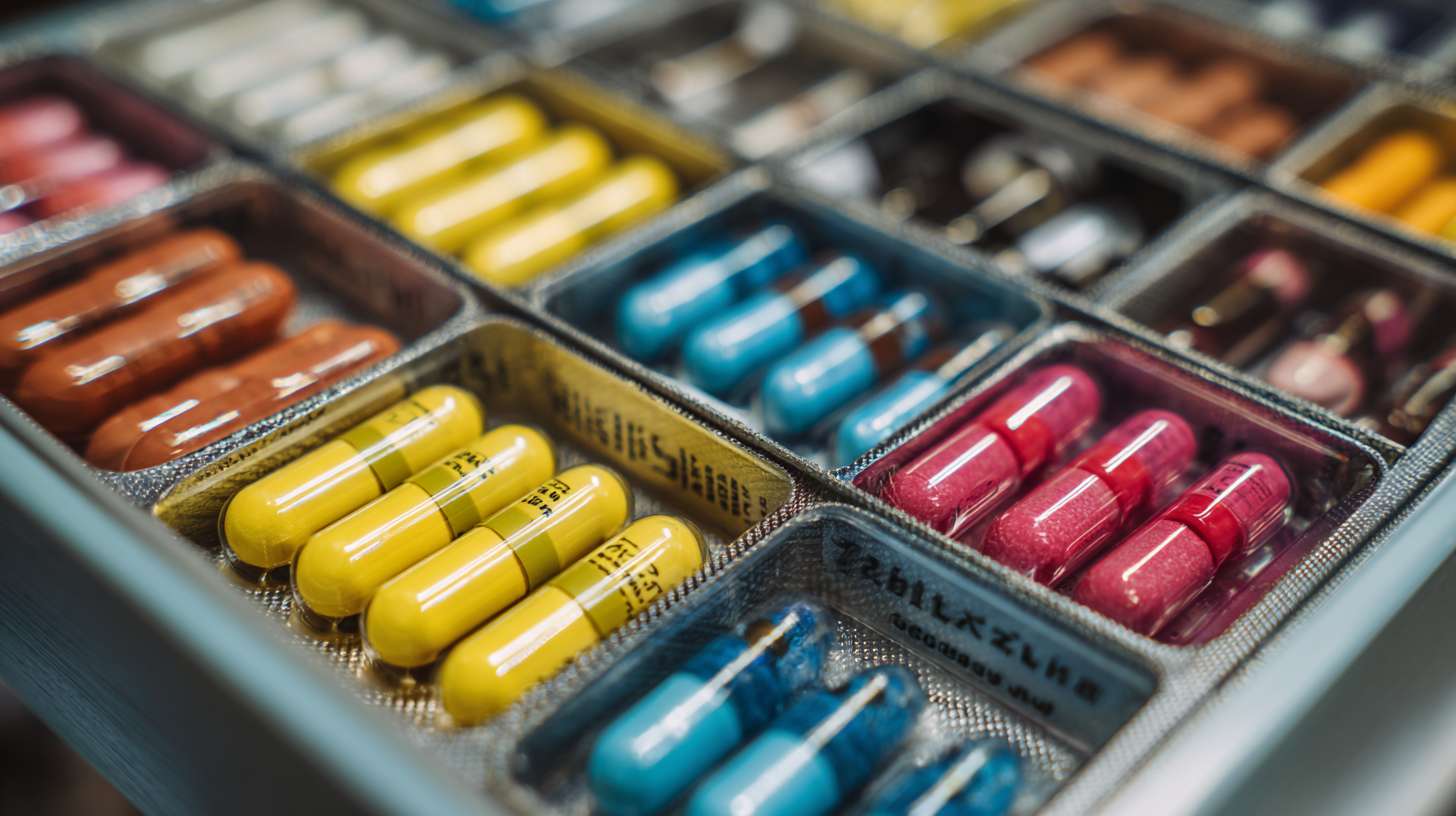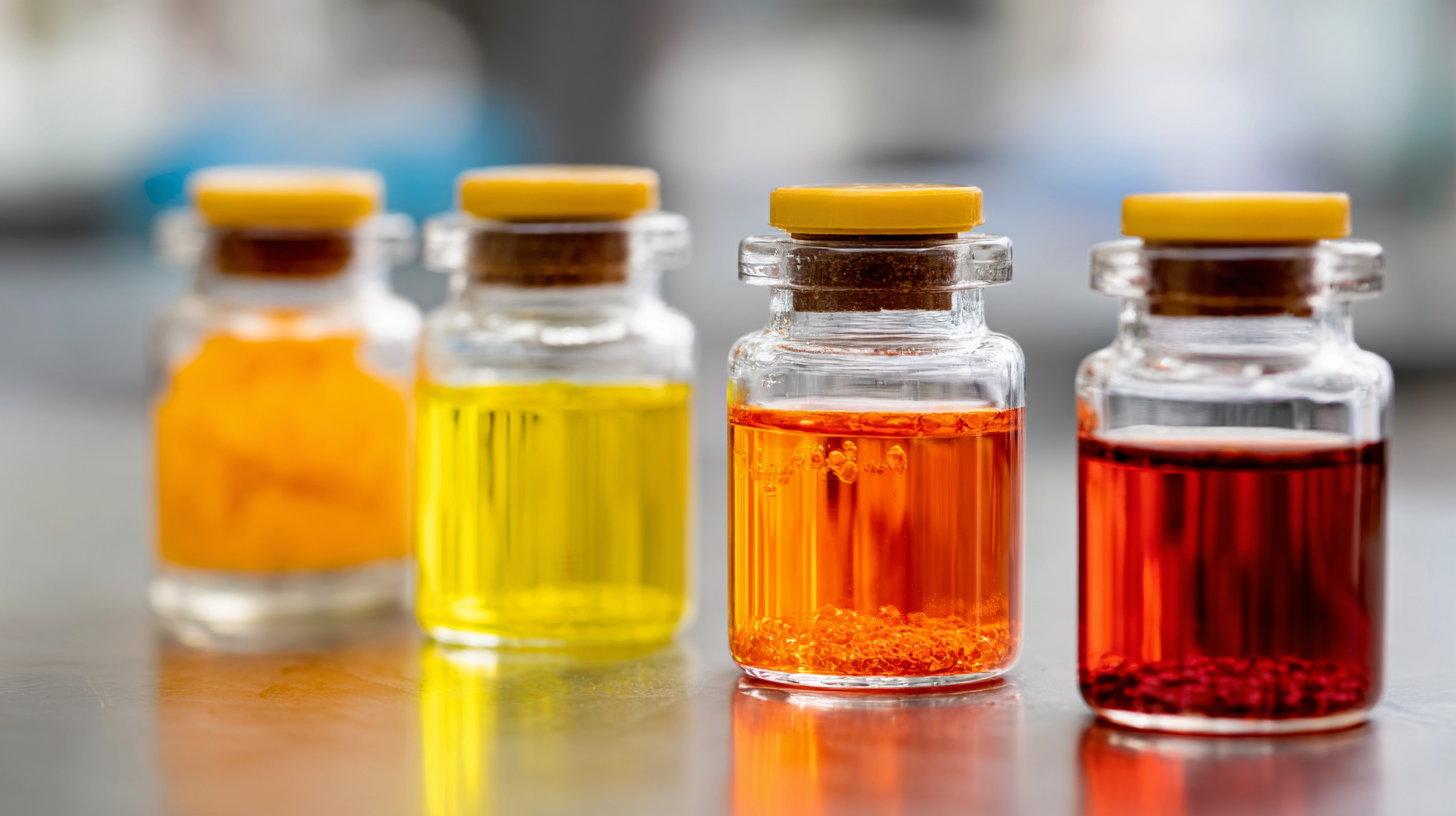Leave Your Message
 Proper storage of pharmaceuticals is crucial to maintaining their efficacy and safety, and Nitroxoline is no exception.
According to a report from the World Health Organization, improper storage conditions can lead to significant degradation of active pharmaceutical ingredients, potentially compromising their therapeutic effects.
Nitroxoline, an antimicrobial agent commonly used for treating urinary tract infections, has specific storage requirements that must be adhered to in order to preserve its potency.
The stability of Nitroxoline is influenced by environmental factors such as temperature, humidity, and exposure to light.
Therefore, following the Nitroxoline Storage Instructions is essential to ensure the medication remains effective throughout its shelf life.
This article aims to provide an overview of essential guidelines for properly storing Nitroxoline, highlighting best practices supported by recent pharmaceutical studies and industry standards.
Proper storage of pharmaceuticals is crucial to maintaining their efficacy and safety, and Nitroxoline is no exception.
According to a report from the World Health Organization, improper storage conditions can lead to significant degradation of active pharmaceutical ingredients, potentially compromising their therapeutic effects.
Nitroxoline, an antimicrobial agent commonly used for treating urinary tract infections, has specific storage requirements that must be adhered to in order to preserve its potency.
The stability of Nitroxoline is influenced by environmental factors such as temperature, humidity, and exposure to light.
Therefore, following the Nitroxoline Storage Instructions is essential to ensure the medication remains effective throughout its shelf life.
This article aims to provide an overview of essential guidelines for properly storing Nitroxoline, highlighting best practices supported by recent pharmaceutical studies and industry standards.
The optimal temperature range for storing nitroxoline is crucial for preserving its efficacy. Typically, nitroxoline should be kept in a cool and dry environment, ideally at temperatures between 15°C to 25°C (59°F to 77°F). Exceeding this temperature range can lead to chemical degradation, potentially reducing the drug's potency and effectiveness. Therefore, it is essential to avoid locations near heat sources or in direct sunlight, as elevated temperatures can accelerate the breakdown of the active ingredient.
In addition to temperature, humidity levels also play a significant role in nitroxoline storage. High humidity can cause the drug to absorb moisture, which may result in clumping or alterations in its physical properties. For this reason, it is advisable to store nitroxoline in a tightly sealed container to protect it from environmental factors. Monitoring both temperature and humidity will ensure that nitroxoline maintains its intended therapeutic effects for the duration of its shelf life.
Humidity plays a critical role in the stability and shelf life of Nitroxoline, a pharmaceutical compound used primarily for treating urinary tract infections. According to a report published by the International Journal of Pharmaceutical Sciences, high humidity levels can lead to hydrolytic degradation, significantly affecting the chemical integrity of the drug. When exposed to moisture, Nitroxoline can undergo changes that may reduce its therapeutic efficacy, leading to concerns about dosage accuracy and the potential for diminished effectiveness in patients.

To ensure optimal storage conditions, it is recommended to keep Nitroxoline in tightly sealed, moisture-proof containers and to store it in a cool, dry place. The United States Pharmacopeia (USP) also emphasizes the importance of maintaining relative humidity levels below 60% for pharmaceutical compounds. In environments where humidity control is challenging, the use of desiccants can help mitigate moisture presence, thus prolonging the shelf life of Nitroxoline and preserving its intended effectiveness. Adhering to these guidelines can aid healthcare professionals and patients alike in maximizing the benefits of Nitroxoline therapy.
When it comes to storing Nitroxoline, the importance of original packaging cannot be overstated. Studies reveal that pharmaceuticals can degrade significantly when exposed to external elements. For instance, a report from the European Journal of Pharmaceutical Sciences notes that proper storage conditions can reduce the degradation rate of active compounds by up to 30%. Original packaging is designed to protect the medication from moisture, light, and temperature fluctuations, all of which are critical in maintaining its efficacy.
Tips: Always keep Nitroxoline in its original blister pack or bottle to minimize exposure to environmental factors. Additionally, store it in a cool, dry place away from direct sunlight to further enhance its stability.
Furthermore, a survey conducted by the Pharmaceutical Stability Group emphasizes that medications stored in their original containers are less likely to lose potency over time compared to those transferred to other vessels. By adhering to these storage practices, patients can ensure they receive the full therapeutic benefits of Nitroxoline when prescribed, ensuring it remains effective through its shelf life.
Tips: Regularly check the expiration date and discard any expired Nitroxoline to prevent using ineffective medication.
| Storage Condition | Optimal Temperature (°C) | Humidity Level (%) | Duration for Best Efficacy | Notes |
|---|---|---|---|---|
| Cool and Dry Place | 15-25 | 30-50 | Up to 24 months | Keep away from direct sunlight |
| Refrigerated Storage | 2-8 | 20-30 | Up to 36 months | Ensure airtight packaging |
| Avoid High Temperatures | Above 30 | N/A | Decreased potency | Do not store in cars or near heat sources |
| Keep in Original Packaging | N/A | N/A | Until expiration date | Prevents contamination |
Proper labeling and monitoring of expiration dates for Nitroxoline are critical components in ensuring its efficacy and safety. According to the FDA guidelines, any pharmaceutical product, including antibiotics like Nitroxoline, should be stored in a way that preserves its potency until the expiration date. This means that each container must clearly display the expiration date, which is typically set 24 months post-manufacture for this drug, based on stability studies. Ensuring that this date is visible and easily readable can significantly enhance compliance in both professional and home settings.

Additionally, a recent report from the Pharmaceutical Stability Working Group highlights the importance of routine checks on medications approaching their expiration dates. Many consumers are unaware that deterioration can begin well before the printed date, particularly when products are subjected to suboptimal storage conditions. Therefore, healthcare providers and patients alike should implement a monitoring system to regularly assess the status of Nitroxoline in their possession, verifying both the physical integrity of the medication and its labeling. This systematic approach is particularly vital in settings where Nitroxoline is stored in bulk, such as pharmacies or hospitals, to avoid the risk of administering compromised medication.
When it comes to storing Nitroxoline, safe handling techniques are paramount to prevent contamination and maintain its therapeutic efficacy. Nitroxoline, an antimicrobial agent primarily used for urinary tract infections, can be sensitive to environmental factors such as moisture, heat, and light. According to a study published in the Journal of Pharmaceutical Sciences, exposure to such conditions can significantly reduce the drug's potency, emphasizing the need for stringent storage practices.
To avoid contamination, it's essential to store Nitroxoline in an airtight container made of opaque material to shield it from moisture and light. Furthermore, maintaining a stable temperature between 15°C to 25°C (59°F to 77°F) is crucial, as fluctuations can lead to degradation. The World Health Organization’s guidelines on pharmaceutical storage stress the importance of routinely checking for signs of moisture or contamination and ensuring the storage area is clean and well-organized to prevent cross-contamination with other substances.
Handlers should also employ proper hygiene practices when accessing Nitroxoline. Washing hands and using gloves can greatly reduce the risk of introducing foreign contaminants. The U.S. Pharmacopeia notes that safe handling techniques not only protect the medication but also enhance patient safety by ensuring that the drug remains effective when prescribed. By adhering to these guidelines, healthcare providers can uphold the integrity of Nitroxoline, safeguarding its clinical benefits.
This chart illustrates the recommended storage conditions for Nitroxoline to maintain its efficacy, focusing on temperature and humidity levels.






